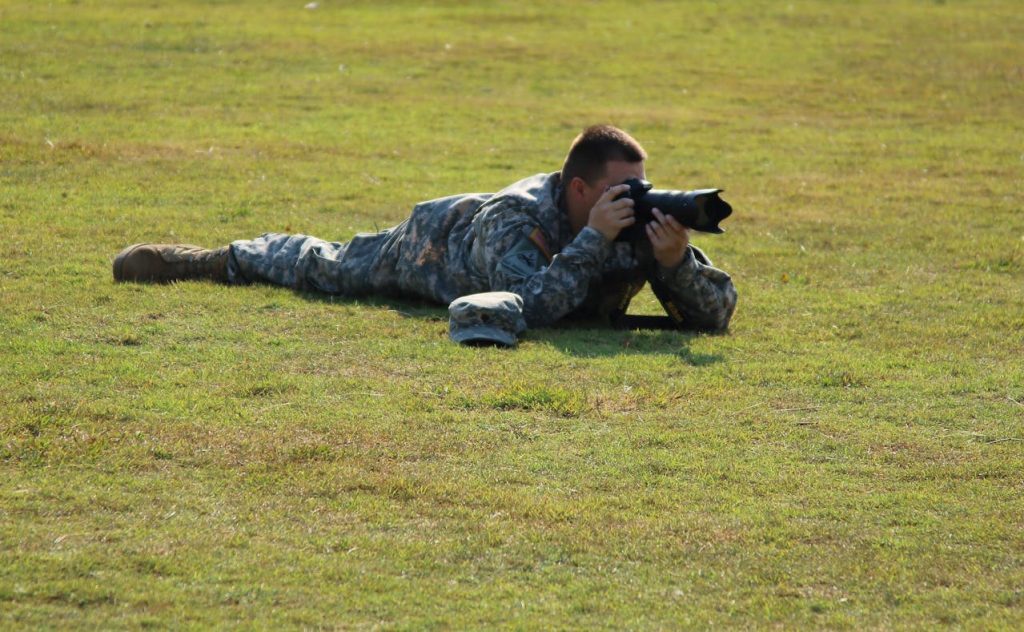Military challenge coins have become a deeply ingrained symbol of honor, camaraderie, and tradition within military cultures worldwide. These small, intricately designed coins are more than just collectibles; they embody the spirit and values of the units and individuals they represent. Over centuries, the concept of military challenge coins has evolved, influenced by ancient traditions and modern innovations. This article explores the historical origins, cultural significance, and evolving designs of military challenge coins, highlighting how they have transitioned from ancient tokens of valor to contemporary symbols of honor.
Ancient Roots: The Origins of Commemorative Coins
The concept of using coins or similar items to signify honor and achievement dates back to ancient civilizations. While not identical to modern military challenge coins, these early tokens laid the groundwork for the tradition we see today.
- Ancient Rome: One of the earliest known uses of coins as symbols of achievement can be traced back to Ancient Rome. Roman soldiers were sometimes rewarded with coins for exceptional service, known as dona militaria. These coins were often marked with images of the emperor or significant military symbols, serving both as a form of monetary reward and a badge of honor.
- Ancient Greece: Similarly, in Ancient Greece, it was common for victors in athletic and military competitions to receive specially minted coins. These coins were not only a form of currency but also a public recognition of the individual’s prowess and accomplishments.
- Medieval Europe: During the medieval period, medals and tokens were used to honor knights and soldiers for their bravery in battle. These items were often highly decorated and bore inscriptions or images representing the deeds of the recipient. While not coins in the modern sense, these tokens shared the purpose of recognizing and commemorating significant achievements.
These early practices highlight a long-standing tradition of using small, portable items to honor and commemorate individuals’ contributions and achievements. This tradition evolved over time, influenced by cultural changes and technological advancements, leading to the modern concept of military challenge coins.
The Emergence of Modern Military Challenge Coins
The modern tradition of military challenge coins as we know it today is believed to have originated in the early 20th century, particularly during World War I. Although the exact origins are debated, several popular stories illustrate how these coins came into use.
- World War I Legends: One popular legend involves an American pilot who was captured by enemy forces and later escaped. The pilot carried a coin given to him by his squadron, which he used to prove his identity to Allied forces, saving his life. This story, whether entirely factual or not, emphasizes the coin’s role as a symbol of identity and belonging.
- Post-War Growth: After World War I, the use of challenge coins expanded as military units began to adopt them more formally. They were often used to foster esprit de corps, build camaraderie, and recognize special achievements or milestones. By World War II, challenge coins had become a more widespread tradition, with various branches of the military embracing them.
- The Korean and Vietnam Wars: During the Korean and Vietnam Wars, the tradition of challenge coins continued to grow. They were used not only within military units but also by higher-ranking officers and officials to honor and recognize service members. The coins became more elaborate, often featuring intricate designs and unit-specific symbols.
The Evolution of Design and Production Techniques
The design and production of military challenge coins have evolved significantly over the years, reflecting changes in technology, artistic trends, and the expanding use of these coins.
- Early Designs: The earliest military challenge coins were simple in design, often featuring a unit’s insignia, a motto, or a basic image. The primary purpose was to create a distinctive and recognizable token that could be easily carried by service members.
- Incorporation of Color and Detail: As minting techniques improved, coins began to incorporate more color and detail. Enamel fills allowed for the inclusion of vibrant colors, making the coins more visually appealing. The use of more detailed engravings and the ability to include multiple colors enabled the creation of intricate designs that could represent specific units, missions, or achievements.
- 3D Elements and Unique Shapes: In recent decades, advancements in minting technology have allowed for the creation of coins with 3D elements and unique shapes. Raised and recessed areas can create a three-dimensional effect, adding depth and texture to the designs. Some coins are even minted in non-traditional shapes, such as shields, stars, or custom silhouettes, to reflect the unique identity of a unit or organization.
- Personalization and Customization: Modern military challenge coins can be highly personalized. Custom elements such as names, dates, and specific events can be included, making each coin unique. This level of customization has broadened the appeal of challenge coins, allowing them to serve not only as recognition of group achievements but also as personal mementos of individual service and experiences.
The Cultural Significance of Military Challenge Coins
Military challenge coins are more than just decorative items; they hold deep cultural significance within the military community. They serve multiple functions, from symbols of identity and belonging to markers of achievement and honor.
- Symbols of Identity and Belonging: Challenge coins often signify membership in a specific unit or participation in a particular mission. They are a tangible representation of one’s connection to a group, fostering a sense of belonging and pride. Carrying a coin from a specific unit can be a point of pride, symbolizing the unique experiences and bonds formed within that group.
- Markers of Achievement and Honor: Challenge coins are frequently awarded to recognize outstanding service, bravery, or exceptional contributions. Receiving a challenge coin from a commanding officer or senior leader is a mark of honor, signifying that the recipient’s actions have been noticed and appreciated. These coins serve as informal commendations, complementing more formal military awards and medals.
- Building Camaraderie and Esprit de Corps: The tradition of “coin checking” is a popular aspect of military challenge coin culture. Service members can challenge each other to produce their challenge coins, with those who cannot produce theirs often required to buy drinks for the group. This playful tradition fosters camaraderie and reinforces the bonds between unit members, while also serving as a reminder to always carry one’s coin.
- Commemorative and Memorial Functions: Challenge coins are often used to commemorate specific events, missions, or deployments. They serve as lasting reminders of shared experiences and significant moments in a service member’s career. In some cases, challenge coins are created to honor fallen comrades, serving as a tangible way to remember and honor their sacrifice.
The Spread of Challenge Coins Beyond the Military
While military challenge coins have their roots in the armed forces, their use has expanded beyond military contexts. Today, challenge coins are used by various organizations, including law enforcement, fire departments, government agencies, and even private corporations.
- Law Enforcement and First Responders: Many law enforcement agencies and first responder units have adopted the tradition of challenge coins. These coins often commemorate specific units, events, or accomplishments, and are used to foster a sense of unity and pride among members. They are also sometimes exchanged with military personnel as a gesture of solidarity and mutual respect.
- Government Agencies: Various government agencies, including the CIA, FBI, and Homeland Security, use challenge coins to recognize service and accomplishments. These coins often feature the agency’s emblem and are used as tokens of appreciation for outstanding work or collaboration with other agencies.
- Corporate and Civilian Use: The tradition of challenge coins has also found its way into the corporate world. Companies may create custom coins to commemorate significant milestones, such as anniversaries or major projects. These coins are often given to employees as a token of appreciation and to foster a sense of corporate identity and loyalty.
- Nonprofit and Community Organizations: Nonprofit organizations and community groups sometimes use challenge coins to recognize volunteers, donors, or members who have made significant contributions. These coins serve as a unique way to honor and thank individuals for their support and dedication.
The Production and Customization of Modern Challenge Coins
The process of designing and producing challenge coins has become increasingly sophisticated, allowing for a high degree of customization and artistic expression.
- Design Process: The design process for challenge coins typically begins with brainstorming and sketching ideas. This stage involves deciding on the symbols, text, and overall layout of the coin. Many organizations work with professional designers who specialize in challenge coins to ensure that the final design accurately represents the desired message and aesthetic.
- Material Selection: Challenge coins can be made from various metals, including brass, bronze, nickel, and even precious metals like silver or gold. The choice of material affects not only the coin’s appearance but also its weight and durability. Some coins also feature additional elements, such as enamel fills or antique finishes, to enhance their look.
- Minting and Finishing: Once the design is finalized, the coins are produced using minting techniques that involve striking the design into metal blanks. Additional processes, such as plating, polishing, and enameling, may be used to add color and detail. The edges of the coins can also be customized, with options like reeded, smooth, or diamond-cut finishes.
- Packaging and Presentation: The way challenge coins are packaged and presented can add to their significance. Coins may be given in presentation boxes, pouches, or display cases, making them suitable for gifting and displaying. This attention to presentation underscores the coin’s value as a keepsake and a symbol of honor.
The Future of Military Challenge Coins
As military challenge coins continue to evolve, several trends and innovations are shaping their future.
- Digital and Interactive Elements: Some modern challenge coins incorporate digital elements, such as QR codes or NFC chips, which can link to websites, videos, or digital content. This integration of digital technology adds an interactive dimension to the coins, allowing recipients to access additional information or experiences.
- Increasing Personalization: The trend toward personalization in challenge coins is likely to continue. With advanced design and production techniques, it’s easier than ever to create unique coins tailored to specific individuals, units, or events. This trend reflects a broader cultural shift toward valuing individual contributions and creating more meaningful, personalized experiences.
- Expanding Use in Civilian Contexts: The use of challenge coins outside the military is expected to grow, as more organizations and groups adopt the tradition. This expansion highlights the universal appeal of challenge coins as symbols of recognition, honor, and belonging.
- Collectibility and Historical Value: As challenge coins become more widespread, their collectibility and historical value are likely to increase. Collectors often seek out rare or unique coins, and as the tradition grows, so too does the market for these items. For many, challenge coins are not just tokens of recognition but also valuable pieces of history and memorabilia.
Conclusion
From their ancient roots as tokens of valor to their modern use as symbols of honor and identity, military challenge coins have a rich and evolving history. They embody the values and traditions of the military community, serving as tangible reminders of service, camaraderie, and achievement. As the tradition of challenge coins continues to expand and adapt to new contexts, their significance remains a powerful testament to the enduring importance of recognition and honor in military and civilian life alike.
If you are interested in high-quality custom made challenge coins, you can fill out one of our FREE quote forms or call us at 800-335-2403.



